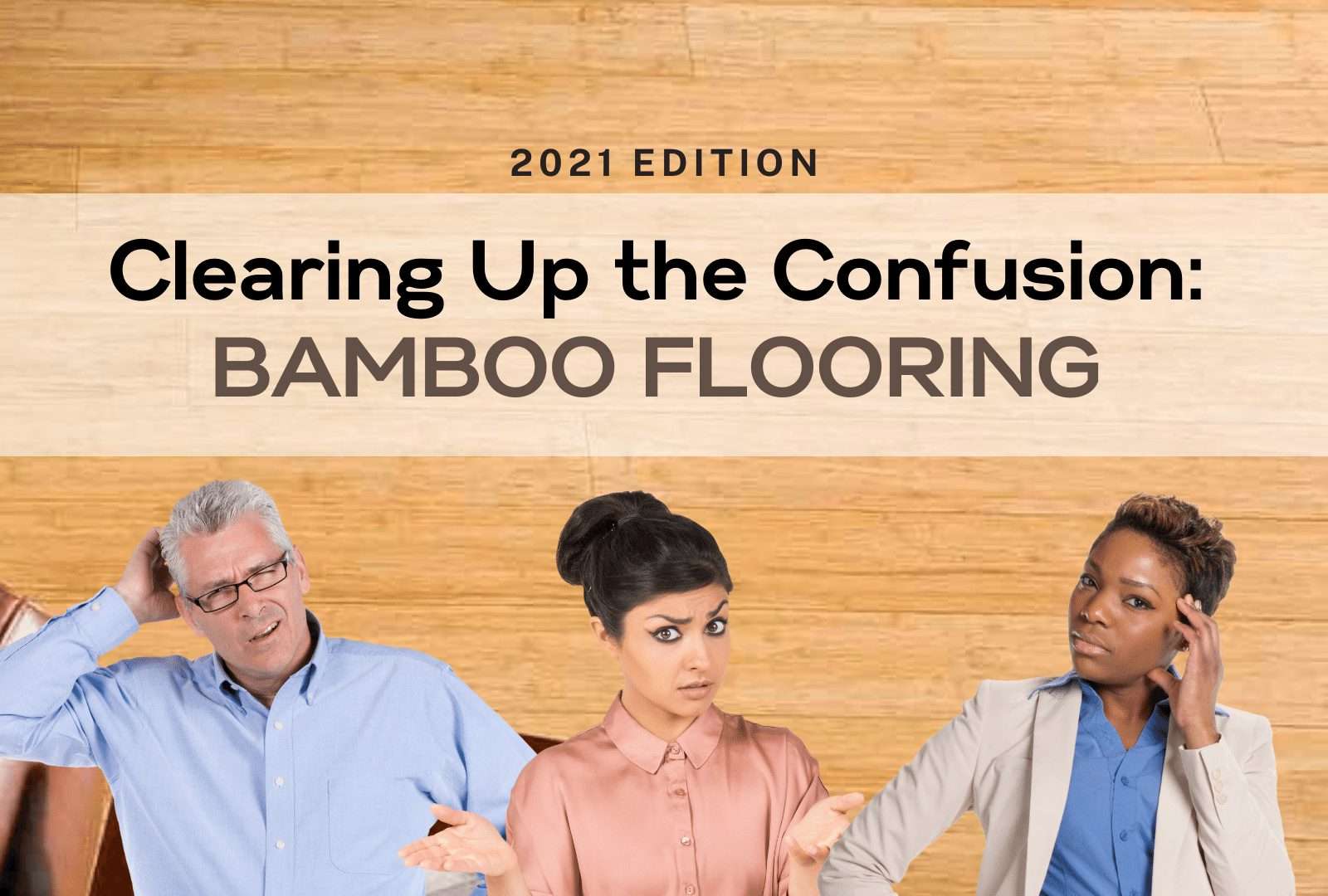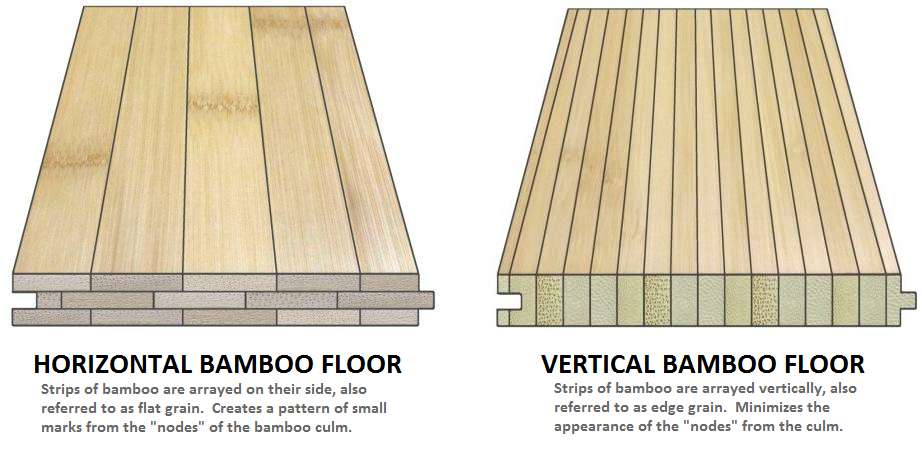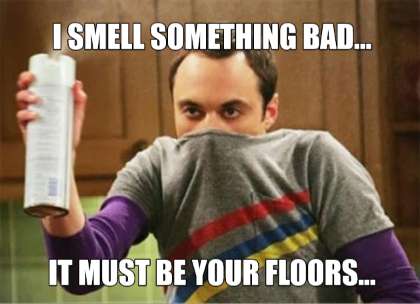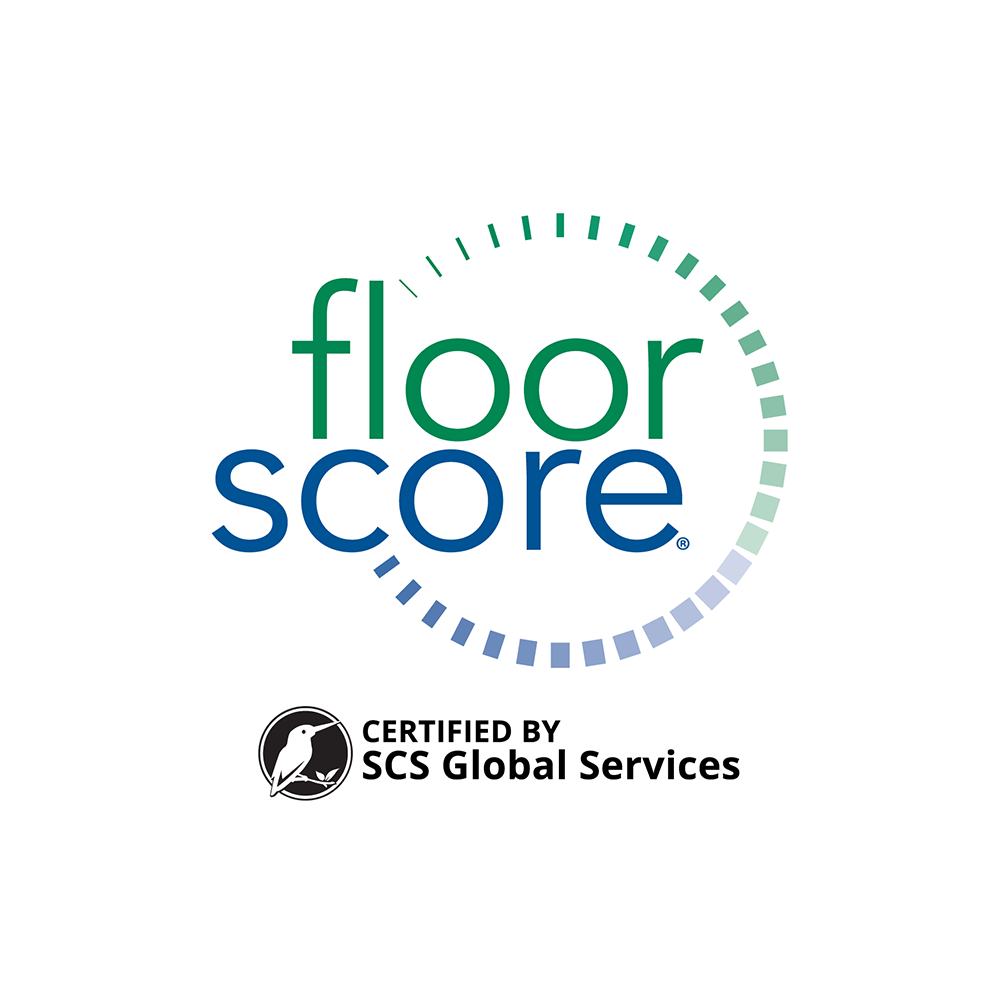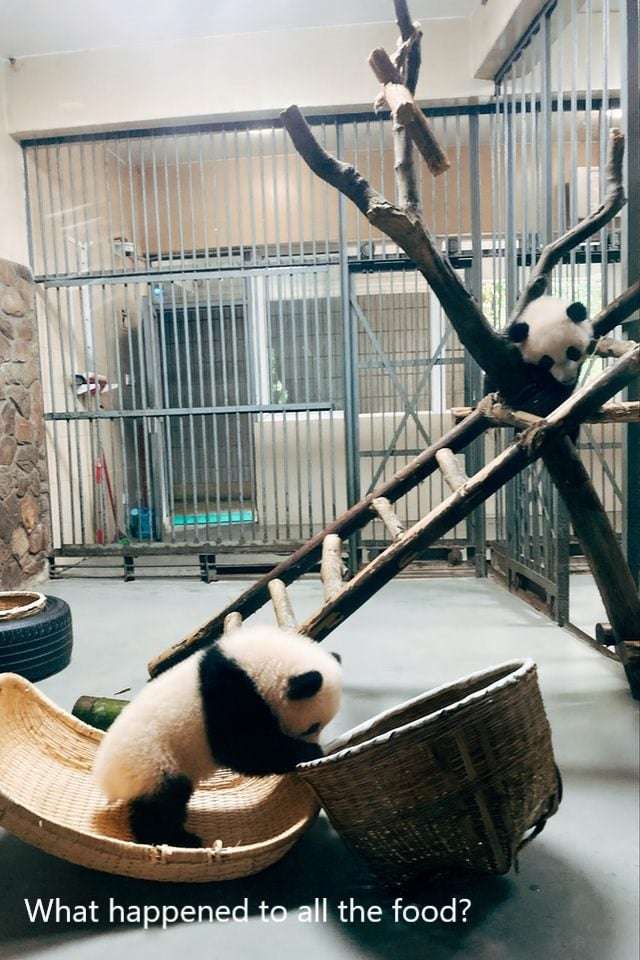 Every political cycle, the candidates make claims and the fact-checkers step in to set the record straight. The goal is a well-informed voter. Similarly, there are plenty of ‘alternative facts’ that have spread across the web regarding bamboo floors in particular, and flooring shoppers are also in need of some legitimate fact-checking.
Every political cycle, the candidates make claims and the fact-checkers step in to set the record straight. The goal is a well-informed voter. Similarly, there are plenty of ‘alternative facts’ that have spread across the web regarding bamboo floors in particular, and flooring shoppers are also in need of some legitimate fact-checking.
The internet is a great source of information, but it’s also a rich source of misinformation. Well, it’s time to set the record straight on bamboo. We’re going to fact check the misconceptions, falsehoods, and beliefs people have about these floors. We’ll even look at some of those flooring horror stories and see what went wrong. Equip yourself with these helpful facts and it’ll be much easier to shop for bamboo flooring in 2021!
Commonly Confused: The Hardness of Bamboo Floors
One of the greatest misconceptions about bamboo is the hardness of the flooring. People think bamboo isn’t hard, even though it is exceptionally hard flooring. There’s a couple of reasons for this. First, they see reviews and complaints like this one from a Home Depot customer:
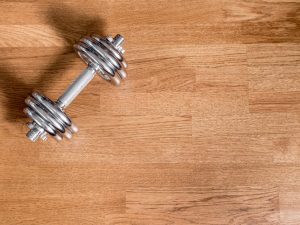 “My wife and I have just finished replacing all carpeting in our 1500 sq ft home with bamboo flooring. We continued our project by replacing our carpeted steps with hardwood.
“My wife and I have just finished replacing all carpeting in our 1500 sq ft home with bamboo flooring. We continued our project by replacing our carpeted steps with hardwood.
In the process of replacing the stair treads, one slid down the stairs, hit the new bamboo flooring, and put a surface scrape about 1-1/2″ diameter in the bamboo. The wood doesn’t appear to be actually gouged, just has the surface finish scraped off.”
It’s easy to assume that because a finished surface is scratched, the material underneath must be flawed. However, any hardwood, tile, laminate, or even concrete floor surface can be scratched. That doesn’t mean that the flooring itself is an insufficient product.
That said, some bamboo finishes are harder than others. If you see aluminum oxide used in the bamboo surface finishing process, you know you are getting a particularly durable finish.
Now that we’ve taken a surface look (pun intended), let’s look at the actual “hardness” of bamboo floors.
“Classic” Bamboo Floors Are Much Softer Than Strand Woven Bamboo Floors
The first bamboo flooring ever made came in only two options: “horizontal” and “vertical” grain bamboo. These floors were made up of rectangular sections of the bamboo culms that were laminated together (see diagrams below), and were a nice alternative to traditional hardwoods due to their sustainable, eco-friendly nature, and affordable prices. Since the bamboo plant itself has a tensile strength comparable to steel, some consumers thought this tensile strength would translate to these “classic” bamboo floors; meanwhile, horizontal and vertical bamboo floors are just average in terms of hardness. These original bamboo floors were in fact very similar to oak flooring, which is in the middle of the pack in the hardness department.
Furthermore, while strand woven bamboo flooring (2-3 times harder than oak) is now the most popular form of bamboo flooring in the market, the old horizontal and vertical floors (also sometimes referred to as edge grain and flat grain) are still sold by some companies due to their low price. Many consumers don’t realize that strand woven bamboo and “classic” bamboo are two very different floors in terms of hardness. They read about strand woven bamboo (which is the hardest wood flooring on average in the market) and incorrectly assume that “classic” bamboo floors have the same hardness. This misunderstanding helps to explain some complaints where consumers feel their bamboo floors aren’t ‘as hard as advertised’.
Horizontal and Vertical Bamboo Flooring VS Strand Woven Bamboo Flooring
When it comes to hardness, you must differentiate between horizontal/vertical-style and the modern strand woven bamboo floors. There is a HUGE difference.
Here’s what the horizontal and vertical styles of bamboo flooring look like, if you were to cut a plank and look at it from the side:
Note that you can easily differentiate these floors from others by looking at a cross-section or side view, as well as a top-down view of the surface patterns.
The more modern strand woven floors are built much, much differently than the early style. This method takes strands of bamboo, weaves them together, and uses high heat and advanced compression technology to fuse the strands into solid flooring planks. Here’s a look at the surface and cross-section of strand-woven bamboo:
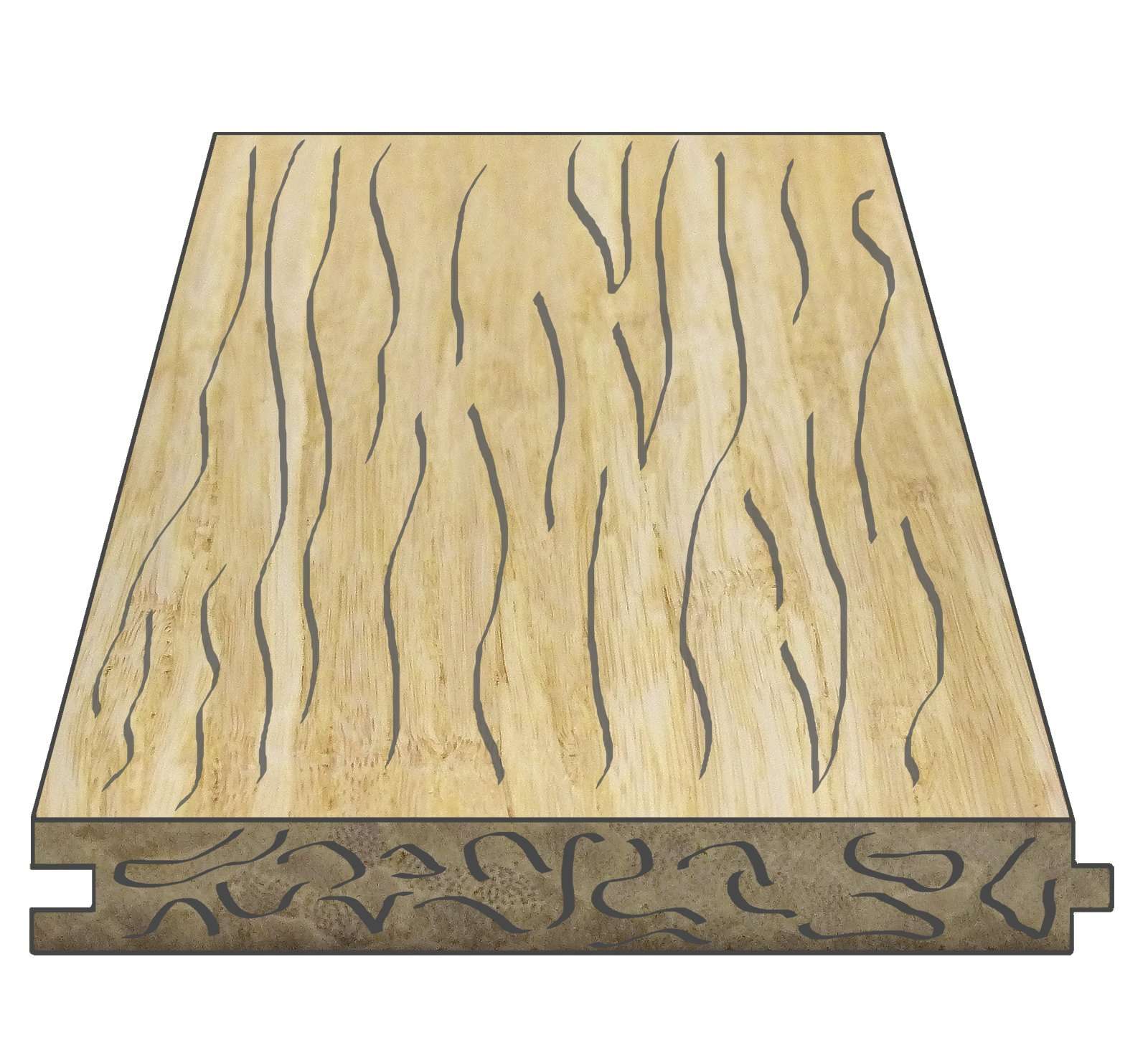
For a full step-by-step explanation on how these strand woven floors are made, check out this article.
Floor Hardness According to Janka Testing
Did you know there’s actually an objective way to test the hardness of wood? Tuck this bit of information away for your next Trivial Pursuit! Wood hardness is tested and rated according to the Janka Hardness Test.
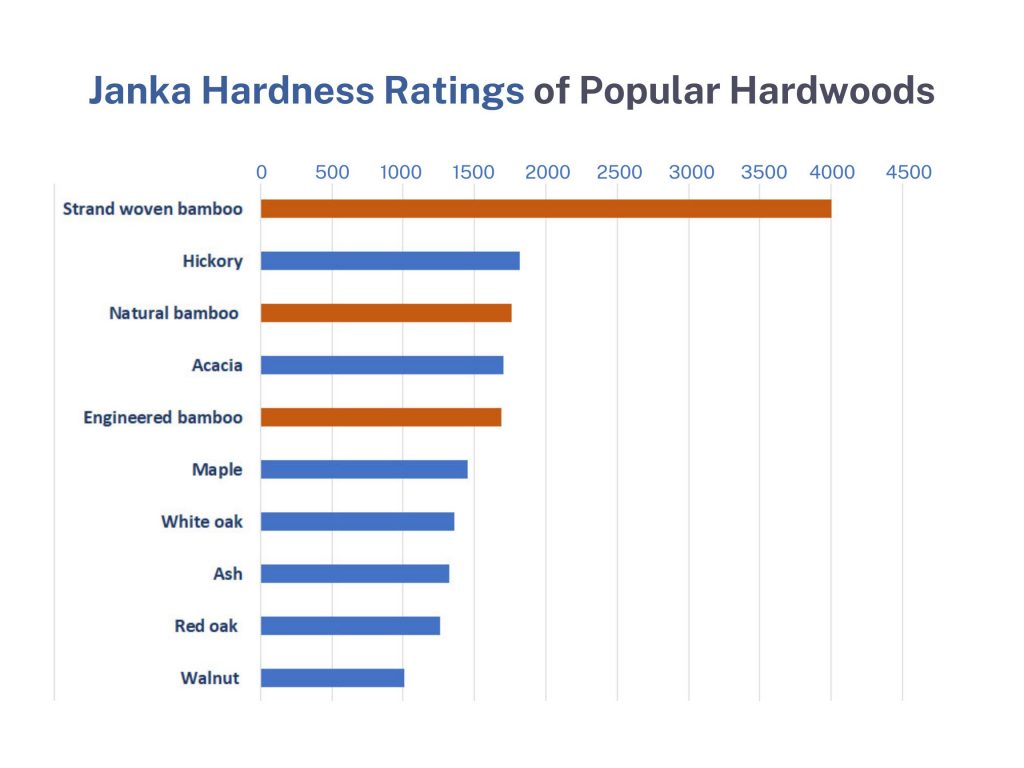
Gabriel Janka determined a way to effectively test the hardness of wood. How? By measuring the force required to embed a steel ball halfway through a piece of wood 6 to 8 millimeters thick. As you can see, the Janka hardness rating for strand woven bamboo is higher than traditional hardwood flooring. And it’s more than double the hardness of vertical/horizontal bamboo flooring.
The Honest Truth: While horizontal and vertical bamboo floors are similar in hardness to oak floors, strand woven bamboo is WAY harder than other hardwoods.
Frequently Falsified: Excessive Formaldehyde in Bamboo
Formaldehyde is a naturally-occurring organic compound that exists in everything, including our breath and our cellular structure. It is classified as a volatile organic compound (VOC), meaning it is a chemical that becomes a gas at room temperature. The primary use of formaldehyde is in the production of resins, and as a chemical intermediate. Microscopic amounts of formaldehyde exist just about everywhere, so it’s hard to proclaim that anything is “formaldehyde-free”. However, there are floors out there that come very close, with ‘effectively zero’ formaldehyde emissions that fully meet “No Added Urea Formaldehyde” (NAUF) standards. Floors like these are perfectly safe for use indoors.
Still, it’s not hard to find stories from people complaining about smells emitting from their new hardwood floors, and not just bamboo. Homeowners talk about experiencing sour smells and odors that cause headaches, and you could conclude that bamboo or hardwood floors are hazardous to indoor air quality based on these stories. But dig deeper and you’ll find the truth…
While some laminate floors (not bamboo) have been in the news for questionable formaldehyde off-gassing claims it’s worth noting that there has yet to be a case of bamboo flooring with elevated levels of formaldehyde or toxic chemicals. And keep in mind, bamboo flooring has now been around since the mid-90’s.
In fact, some deliberate misinformation was put on the internet in the early years by wood interest groups about formaldehyde and bamboo flooring, which has inadvertently led to bamboo being one of the most tested and safe flooring products available today.
So how can you ensure you don’t end up with strong-smelling, high VOC-containing flooring in your home? Here are some tips for finding new floors that are healthy for your family to live with.
How to Find Healthy, Safe, Non-Hazardous Floors
- Opt for a product that is FloorScore® Certified, a certification that verifies low or zero-VOC emissions in flooring.
- Look for flooring companies that test their floors annually for off-gassing and formaldehyde content for proof of the product’s safety.
- Find out if the floors you like comply with health and safety regulations like CARB Phase 2 and OSHA Air Quality standards.
- Don’t be afraid to ask the manufacturer what level of formaldehyde their products contain.
- See if the floors you like qualify for LEED credits. If they do, this can offer further proof that the product is a low-emitting material (Indoor Environmental Quality – IEQ Credit 4).
The Honest Truth: High quality bamboo flooring brands don’t contain harmful chemicals and they have the laboratory test results and certifications to back it up.
Modern Myth: Bamboo Floors Can’t be Refinished
To be honest – if you’ve installed strand woven bamboo flooring, the truth is that you may never have to refinish it as long as you live in your home, because it doesn’t get nearly as damaged as traditional hardwood, due to its extreme hardness. In fact, part of the eco-friendly appeal of bamboo flooring is not only the fast regeneration of the source plant but also the extremely long product longevity once installed. All that being said, you can still find articles bemoaning the fact that you can’t refinish bamboo floors. Once again, that’s simply not the truth. Both solid and engineered strand bamboo floors can be refinished. The only difference is the number of times either type can undergo this process.
An Overview of the Refinishing Process
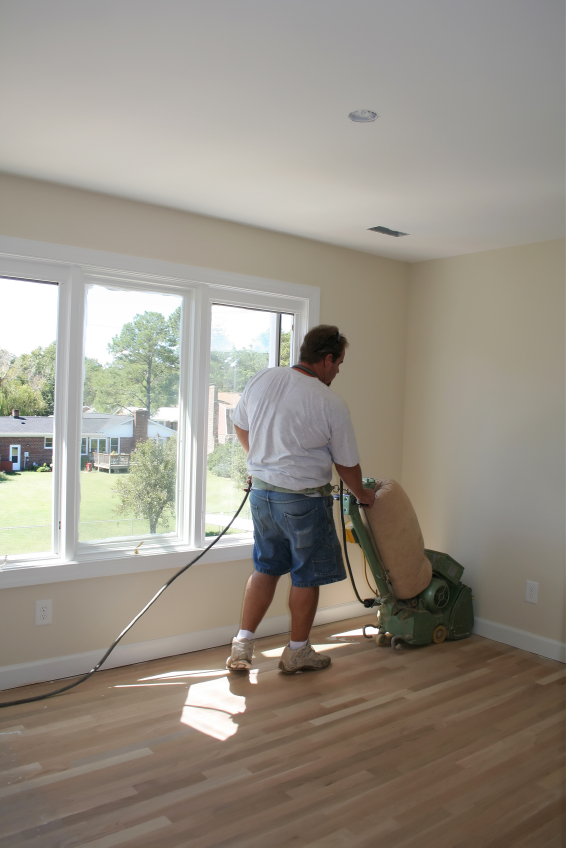
Refinishing bamboo floors involves sanding down the existing finish (and stain, if it exists) and applying a new polyurethane clear coat on top. Solid strand woven floors of 9/16th thickness can typically be refinished 2-4 times. Since these products contain bamboo from top to bottom, you don’t have to worry as much about the sander reaching and possibly wearing down the actual hardwood flooring material underneath the existing finish after just one or two sandings. You can refinish bamboo floors that have a 3-4mm wear layer and an HDF, multi-ply, or rigid core up to 2 times.
Why the difference? The engineered floors are not comprised of bamboo all the way through like the solid planks, and instead thick wear layer of strand woven bamboo on top, and an HDF, SPC (rigid), or multi-ply eucalyptus core underneath the wear layer. Since the real solid strand woven bamboo wood comprises only the top ‘wear layer’ of the flooring plank, you’ll have slightly less opportunities to refinish them before the top layer is too thin.
Thus, if your bamboo floors are sun-faded, dented, or are starting to show visible signs of surface wear, there’s no reason you can’t refinish them much as you would refinish any other solid or engineered hardwood floors.
Can I Stain Bamboo Flooring While Refinishing?
The short answer is no. Additional confusion sometimes arises when it comes to staining bamboo floors. Some homeowners want to change the color of their floors for decorative purposes, or alternatively to keep the same color on their stained bamboo yet refinish them just to restore the finish luster. Please note that strand woven bamboo flooring cannot be color stained when being refinished.
Therefore, after you refinish a bamboo floor you will be left with only one of two colors (no matter what color your floor was when you started). The final color is not a choice: it is whatever the base/raw bamboo planks are made of: either natural (blonde) or carbonized (brown) bamboo. If you want to see what color your bamboo flooring will be after you refinish it, simply flip over a plank and look at the bottom – that will tell you if the raw/base color of the plank is natural or carbonized – that will be your final floor color if you choose to refinish your floor.
Refinishing Pre-Stained Floors
Refinishing a dark/brown/red stained strand woven bamboo floor? You will most likely be left with a carbonized bamboo floor once done. If you refinish a light/grey/white stained strand woven bamboo floor you will most likely be left with a natural bamboo floor once done. This is because strand woven bamboo flooring cannot be stained back to its original color (or any other color for that matter) on site. This color staining process can only be successfully performed on strand woven bamboo in a controlled, advanced finish environment.
Why can’t strand woven bamboo floors be color stained on site, you may ask? Because the density of the strand material prevents it from absorbing color stains on-site. The flooring will only absorb the stain in a controlled finish line environment. Thus, the final color of a refinished bamboo floor will be the color of the base material.
The Honest Truth: Both solid strand and engineered bamboo floors can be refinished, but they cannot be color stained. When refinishing a bamboo floor, you will always end up with either a natural (blonde) bamboo floor or a carbonized (brown) bamboo floor, depending on what the base color/material of the planks is. To see if your planks have a natural or carbonized base material, just flip them over and look at the bottoms of the planks – this will be the color of the final flooring if you refinish it.
Previously Puzzling: Bamboo & the Panda Population
In discussions about the sustainable or eco-friendly properties of bamboo, you’ll inevitably hear the claim that cutting down bamboo deprives the world’s panda population of their primary food source.
This one is easy to disprove:
- Pandas live *very* far from where bamboo harvesting occurs. The great majority of Moso bamboo harvests for flooring is on the East Coast of China. This location is very far from panda habitats and has a different climate than pandas prefer. The majority of the wild pandas in China live West and Central, about 4,000-10,000 feet above sea level in high, humid, and remote mountain ranges.
- The species of bamboo that flooring manufacturers harvest is not one that pandas enjoy. Moso is the only bamboo species that is hardy and stable enough to use in the manufacturing of this type of flooring. Pandas primarily eat species of arrow bamboo, black bamboo, and about 20 other varieties of bamboo in China – not Moso.
The two key factors that are threatening pandas in the wild are
1) Habitat loss due to deforestation/encroachment due to growing cities (urban sprawl)
2) The killing of pandas by hunters and poachers for sport.

More on Bamboo Abundance in China
Research published in 2018 surveyed bamboo forests in China and found bamboo grown in 21 provinces. Bamboo production grew at about 4% annually. In other words, there’s plenty of hectares of bamboo for flooring and pandas. And that research project only surveyed the bamboo situation in China. Bamboo also grows throughout Asia and in 2019, a Florida farm harvested its first crop of Moso bamboo.
As a crop, bamboo regenerates very quickly and can be harvested every 4-5 years. It also doesn’t require heavy fertilization. These facts make it an eco-friendly material to use in flooring and building products. Despite any rumors, the manufacturing of bamboo for flooring is not starving or harming the panda population.
THE STRAIGHT FACTS: Pandas do not live near bamboo forests used to make bamboo flooring and pandas don’t eat the species used to make bamboo flooring (Moso).
Iterated Inaccuracy: Cupping and Gapping in Floors
Other bamboo floor horror stories are those of homeowners experiencing issues like cupping of their flooring or gaps between planks. Where would you point the finger if the high-quality floors you purchased began looking like in the pictures below?
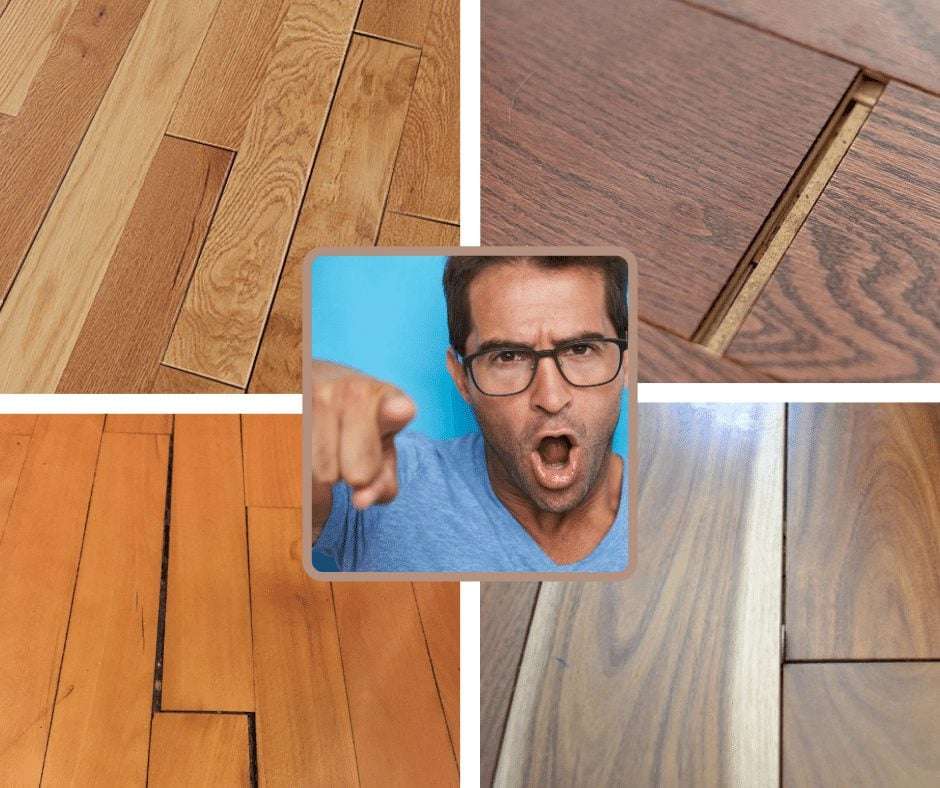
The first thing some people do when they experience this issue is blame the product or manufacturer. The questions below should often be asked before jumping to conclusions, as most gapping issues can be a result of the environment in which the floors are installed:
- “How long did you acclimate your floors before installation?”
- “Where did you acclimate your flooring planks?”
- “Did you use a moisture barrier or underlayment when installing?”
- “Did you install the flooring over an unconditioned space?”
This common practice really seems to bother people like this homeowner over on Houzz. While product moisture balancing during manufacturing processes are not always perfect, they can be responsible for a very small percentage of gapping issues. The truth is that the majority of the gapping people experience on their hardwood floors (bamboo or otherwise) are totally normal and to be expected – they are the nature of the beast when it comes to hardwood flooring, or they a result of improper flooring acclimation and/or installation. Meanwhile, cupping is almost always the result of too much moisture in the sub-floor.
Gaps: Natural Expansion & Shrinkage
Remember that bamboo is a plant. Even though bamboo is a grass, it’s still a living, breathing organism just like oak and other hard woods. It will naturally expand and contract as the weather changes. Acclimate the floors before installation! This is what minimizes the amount that the floors will swell and shrink as seasons change from hot, humid summers to freezing, dry winters. Keeping the humidity in your home within a 20% range (i.e. 35-55%) is the best medicine to keep your flooring looking healthy and beautiful and keeping the planks tightly ‘racked’.
Bamboo and other hardwoods require installation in a space with sufficient climate control. Check out this article to get the low-down on how to properly acclimate hardwood and bamboo flooring.
Cupping Floors: When There’s Moisture Below
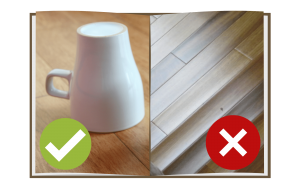
When installing over crawl spaces, unconditioned spaces, or directly on a concrete slab, a moisture barrier is a must between the subfloor and the wood/bamboo floor. Why? Because otherwise, you may experience cupping with your floors. This is where the middle of a floor plank appears slightly sunken while the edges of the plank curl upwards.
Cupping is most frequently the result of moisture hitting the underside of the hardwood flooring from the subfloor. This issue doesn’t just affect bamboo, either. Cupping can occur in any hardwood floor that has a significant imbalance of moisture in its surroundings.
Here’s more: Our Tips and Tricks for Bamboo Floor Installation article provides details on the necessary prep work required before a flooring install.
The Honest Truth: The great majority of gapping and cupping in this flooring are the result of improper installation or environmental factors, not defective flooring. Bamboo and other hardwoods require proper acclimation and should always be installed in a climate-controlled environment.
Tall Tale: You Can’t Install Bamboo in Humid Climates

Whether you live in an arid desert, on a tropical island, or anywhere in between, you can install bamboo floors regardless of climate. Some folks think that bamboo is sensitive to humidity and so it isn’t good for homes in humid areas. Luckily for those residents in beach houses, island homes, or otherwise tropical areas, this simply isn’t true!
Humid climates are actually very suitable for bamboo flooring because they have relatively stable humidity year-round (even if it is higher than normal). Always acclimate the flooring according to the manufacturer’s advice. If you do this, you’ll rarely experience any issues with this flooring in a humid climate. If it becomes too wet, the boards can expand and two planks can begin to “tee-pee”. Want an easy way to prevent this? Use a programmable dehumidifier or put in a portable dehumidifier to reduce the moisture in the air. You can also cut expansion gaps at the sides of the planks where they’re pushing up against the walls.
More on Humidity Controls
A whole-house humidity modulator or humidistat will cost more than purchasing a portable device, perhaps. But many homeowners think it’s a worthwhile investment. Also, HVAC professionals offer many options for integrating humidity controls into a home’s air quality control system. Chances are, there is one that fits your household budget. An automated system allows you to control the humidity levels even while you sleep or are away on vacation.
A Trustworthy Company Will Have Trustworthy Floors
Not all bamboo manufacturers and retailers produce the same quality products. You might find low-cost bamboo floors, but it’s likely that what you’re saving in cost, you’ll be sacrificing in quality. There are plenty of bamboo flooring sale items that have great quality if the brand is good.
Research the flooring company as well as you research the flooring to help you avoid ending up with low-quality products. Choose the least-manipulated and most-reliable review websites to see honest customer feedback. A few reliable reviews sites to check include the Better Business Bureau, Yelp, and ComplaintsBoard.com.
A reputable company won’t just try to sell you on their floors; they’ll also be honest and upfront with the reliability of their products and the potential issues you may run across.
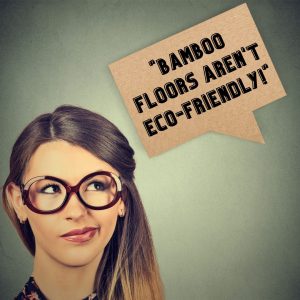

About the Author
Cheryl is our go-to guru for all things sustainable living. She’s on a mission to make your family and our planet thrive! With a heart as big as her passion for sustainability, Cheryl brings you the freshest insights on eco-friendly building products and energy efficiency. 🌱💡
And hey, did you hear about the eco-friendly lightbulb that went to therapy? It finally found its inner “enlightenment”! 😄 Join Cheryl on this green journey, where she’ll tackle your concerns with a smile and a sprinkle of eco-humor!

